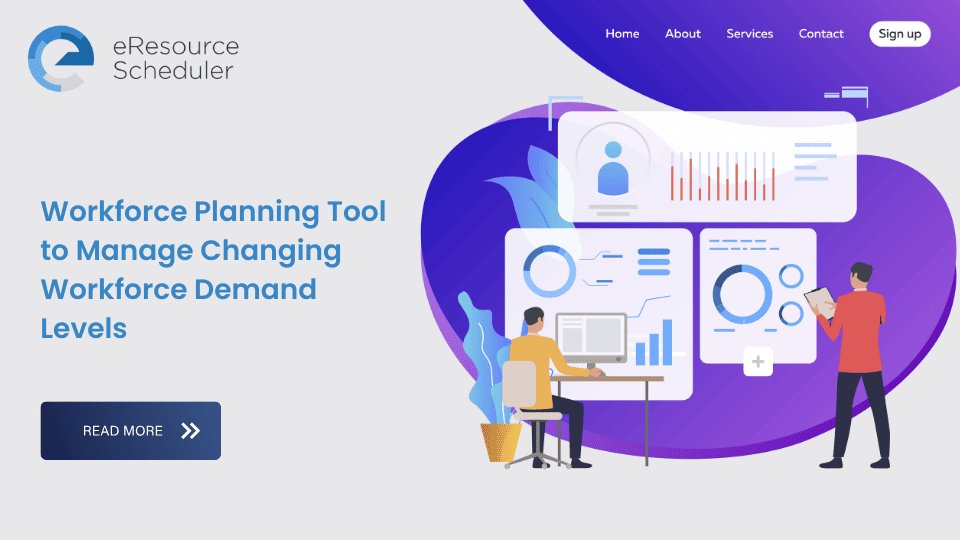
Workforce planning is an integral part of our life. We plan for trips, birthdays, work, and our retirement. When it comes to work, there is budget and goal workforce planning. More specifically, in project management we have to plan for our resources. Unfortunately, workforce planning for shifts or changing workforce demand levels can be challenging, but that doesn’t mean it’s impossible.
In this blog, we’ll discuss what is demand planning and how one can improve forecasting with the aid of a resource management software.
But, before we jump into how we can forecast and plan our workforce properly, let’s get back to the basics.
Workforce planning is the process of identifying a company’s long-term supply of resources. It requires a manager to understand their future resource requirements and compare those with their current staff count. For effective Workforce planning, an organisation has to analyse previous project trends and requirements, sales figures, country-specific holiday schedules and work times, weather, and seasonal data.
When done right, Workforce planning minimises resource disruptions and leads to gains in productivity and profitability. It also informs a manager what projects they can take on and identifies the timeframe they can complete them in. In simpler words, Workforce planning ensures you have the right people at the right time.
There are two forms of workforce planning:
Short-term: up to 2 years
Long-term: 5 years and beyond
Here are some of the most common ways organisations go about ensuring that their resources are sufficient.
Linear Regression
This is a statistical approach where the manager assigns a “weight” to all the project variables. They use historical data from sales and previous projects, alongside current predictions on market and economic conditions.
Benchmarking
The benchmarking way, like its name, uses competitor data, performance metrics and processes to devise a forecast.
Delphi Method
In the Delphi method, a manager seeks the aid of industry experts for forecasting and workforce planning. Multiple sets of questionnaires are sent to experts and the responses are reviewed and consolidated. The report is again given back to the expert panel for feedback. The panel gets a chance to voice their opinion and this process is continued till a majority consensus is formed. Delphi Method is also known as estimate-talk-estimate (ETE) technique. The drawback to this approach is that it’s quite time consuming.
Workforce planning is easier when your organisation has just one shift. It gets a whole lot more complicated when multiple shifts or several geographic locations come into play. Picture this example, you have a client based in Europe and you have teams in India, Japan, and Dubai servicing them. Every resource has different working hours, and you have to plan which resource will be available at what time. It’s no easy task.
One more applicable scenario is a 24/7 customer service call center. For a contact center, you’ll need to plan for workers who can be available for the night shift and have enough back-up resources if there is an increase in call volumes. You need to get the right forecasting model in place for accurate predictions.
Another challenge in forecasting is building the right labour models. Let’s go back to the customer service example, if you have data on the number of calls that are received during different shifts (morning, evening, and night), how can you ramp up or adjust the resources according to the call volume? How can a manager create the minimum number of employees required for any shift? What is the maximum capacity to scale employees?
Lastly, the metrics used for resource planning also change as per industry. For instance, in a hospital scenario, the relevant data would be on patient traffic and bed occupancy, while in a restaurant, it would be on order volume.
Workforce planning is a multi-step process and it requires inputs from various data points. Its complicity can increase as the size and scope of the project change. A resource scheduling software can make forecasting smoother, quicker, and more efficient.
Here’s how a workforce management tool can help you overcome resource planning challenges:
Your resources (employees) are both your company’s greatest asset and its highest expenditure. The right software by your side will ensure your business always has the right skillset and amount of people to meet the demand.
eRS ensures you have the right tool for managing your workforce and its changing levels. The resource management software encompasses all the features that will help you plan, assign, budget and forecast your workforce requirements. It will make your company’s operations smoother, more efficient, and less costly. More importantly, it will help you deliver the best results for your customers.
Ready to have the right tool by your side? Start your free 14-day trial today.
Plan Smarter. Schedule Faster.
Join thousands already using eResource Scheduler to align teams, time, and tasks seamlessly.